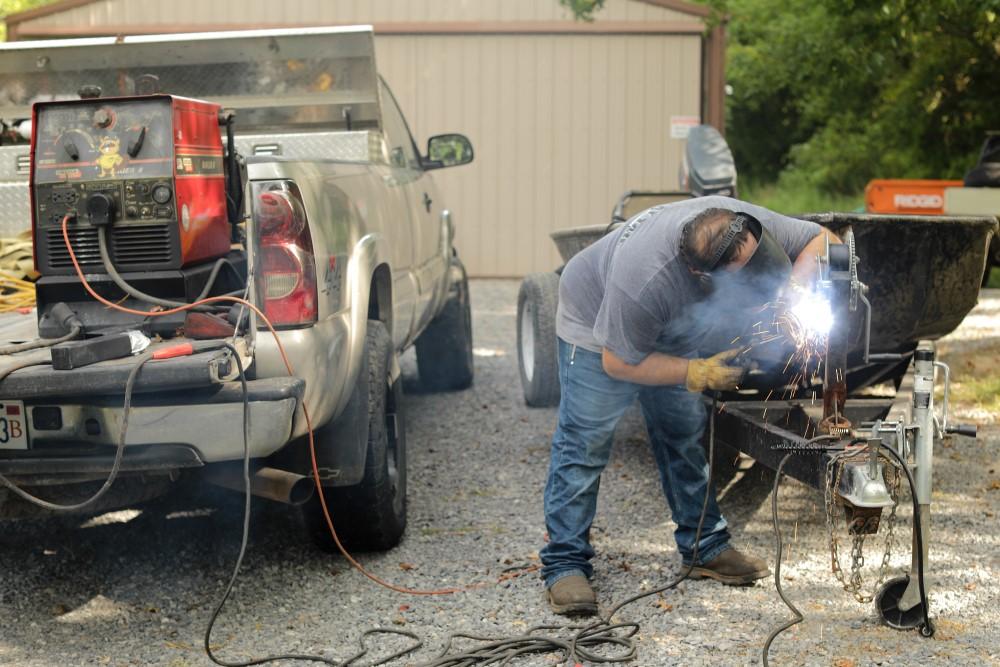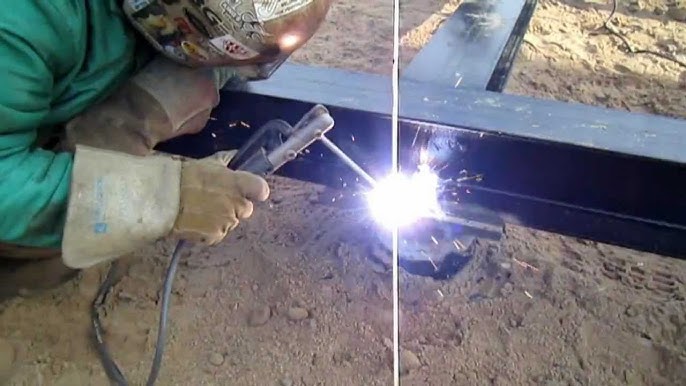All About Welding: Key Insights Into Techniques and Finest Practices for Success
Welding incorporates a selection of techniques, each matched for particular materials and applications. Comprehending these techniques, such as GMAW, SMAW, and TIG, is necessary for attaining excellent outcomes. In addition, the appropriate tools and safety and security techniques can not be forgotten. As prep work and repairing play essential functions in the welding process, grasping these components can substantially boost the high quality of the final product. What are the vital variables that ensure a successful weld?
Understanding Various Welding Methods
Welding techniques incorporate a range of methods, each matched to certain applications and materials. Amongst the most typical techniques are Gas Steel Arc Welding (GMAW), Protected Steel Arc Welding (SMAW), and Tungsten Inert Gas Welding (TIG) GMAW, likewise called MIG welding, is preferred for its speed and versatility, making it ideal for slim materials. SMAW, or stick welding, is preferred for its simplicity and performance in outside environments, specifically with thicker metals. TIG welding uses precision and control, making it appropriate for elaborate job and non-ferrous metals (Fabrication). Each method has its unique benefits and factors to consider, allowing welders to pick the best technique based upon the project's demands, product kind, and desired results. Recognizing these methods is crucial for successful welding
Necessary Welding Equipment and Tools
While numerous welding strategies need specific skills, the ideal equipment and devices are equally necessary for attaining quality results. Vital welding tools consists of welding equipments, which vary depending upon the method-- such as MIG, TIG, or stick welding. Safety equipment, consisting of gloves, aprons, and helmets, assurances safety and security and convenience during the process. Additionally, fixtures and clamps help secure products in position, ensuring accuracy in welds. Consumables like welding poles, cord, and securing gas are additionally crucial elements that affect the top quality of the weld. Additionally, tools such as cutters and grinders assist in surface preparation and post-weld ending up, adding to a professional outcome. Buying top notch equipment ultimately enhances the performance and efficiency of welding jobs.
Security Practices in Welding
Appropriate safety techniques are essential in the welding sector to secure workers from possible risks. Welders must put on proper personal safety equipment (PPE), consisting of safety helmets with appropriate shading, handwear covers, and flame-resistant clothes. Adequate air flow is important to reduce exposure to hazardous fumes and gases created during the welding procedure. Additionally, employees should be learnt the correct handling of welding devices to avoid crashes. Fire precaution, such as keeping combustible materials away from the welding area and having fire extinguishers easily offered, are required. Normal evaluations of tools and work areas can aid identify prospective threats before they cause crashes. By adhering to these safety techniques, welders can create a safer working atmosphere and decrease threats related to their trade.
Readying Products for Welding
Preparing products for welding is a vital step that greatly influences the top quality and honesty of the final product (Belgrade Fabrication). Proper prep work includes cleansing the surface areas to eliminate contaminants such as oil, rust, and dust, which can jeopardize the weld. Methods such as grinding, sanding, or using solvents are frequently utilized to accomplish a clean surface. Additionally, making certain that the materials fit with each other comfortably is essential; gaps can lead to weak welds. It's also vital to take right into account the placement and positioning of the parts, as this will certainly impact the simplicity of welding and the final end result. Picking the proper filler material and making sure compatibility with the base steels is necessary for accomplishing solid, resilient welds.
Tips for Achieving High-Quality Welds
Achieving top notch welds needs interest to information and adherence to finest techniques throughout the welding process. Proper joint prep work is vital, making sure surface areas are cost-free and tidy from contaminants. Selecting the appropriate filler product and welding method based upon the base steels is vital for suitable bonding. Keeping consistent travel speed and angle while welding can avoid issues and promote harmony. Furthermore, controlling warm input is essential; extreme warmth can result in warping and damaged joints. Consistently inspecting the welds during the process Read Full Report permits prompt changes if needed. Ultimately, using appropriate post-weld therapies, such as cleaning and tension alleviation, can improve the toughness and stability of the weld, ultimately guaranteeing an effective result.
Troubleshooting Usual Welding Issues
Welding typically presents challenges that can influence the quality and integrity of the end product. Common issues such as porosity, irregular weld grains, and getting too hot can emerge, each requiring particular repairing strategies. Comprehending these issues is important for welders to enhance their skills and achieve suitable results.
Porosity Problems Clarified
Although porosity can commonly be neglected, it remains a vital problem in welding that can jeopardize the integrity of a finished item. Porosity describes the existence of tiny gas pockets within the weld bead, which can compromise the joint and lead to premature failing. This trouble typically develops from pollutants, wetness, or incorrect protecting gas coverage during the welding procedure. To reduce porosity, welders ought to confirm that the base products are tidy and completely dry, utilize appropriate shielding gases, and keep constant welding specifications. Routinely examining the equipment and atmosphere can likewise help recognize possible problems before they manifest in the weld. Dealing with porosity successfully is necessary for attaining solid, durable welds that meet top quality criteria.

Inconsistent Weld Beans
Inconsistent weld beads can greatly influence the top quality and stamina of a finished item. Numerous elements contribute to this issue, consisting of improper travel speed, wrong amperage setups, and irregular electrode angles. When the welder relocates as well rapidly, a bead might appear narrow Web Site and lack infiltration, while moving as well gradually can create too much build-up. Additionally, using the wrong amperage can cause either undercutting or too much spatter, both of which compromise weld integrity. The welder's strategy, such as irregular torch motion, can likewise lead to unequal bead look. To alleviate these troubles, welders must concentrate on preserving stable, controlled movements and making sure appropriate equipment setups to accomplish harmony in their welds. Consistency is key to attaining strong and trusted welds.
Getting Too Hot and Bending Issues
Excessive warmth during the welding procedure can lead to significant getting too hot and buckling concerns, impacting the structural stability of the workpiece. These troubles usually show up as distortion, which can jeopardize placement and fit-up, making more setting up testing. Factors contributing to overheating include the option of welding specifications, such as voltage and take a trip rate, along with the type of material being bonded. To alleviate these issues, welders should maintain constant travel speed and suitable warm input while keeping an eye on the workpiece temperature. Furthermore, pre-heating or post-weld heat treatment can help reduce tensions brought on by rapid cooling - Montana Mobile Welding and Repair. Normal assessment and adherence to ideal practices are essential in stopping getting too hot and ensuring the longevity and dependability of bonded structures
Often Asked Inquiries
What Are the Occupation Opportunities in the Welding Industry?
The welding sector supplies diverse job possibilities, including placements as welders, engineers, educators, and assessors. Experts can work in production, construction, aerospace, and vehicle sectors, see this website gaining from solid need and competitive incomes in numerous duties.
Just How Can I Enhance My Welding Rate Without Sacrificing High Quality?
To boost welding speed without compromising quality, one must practice reliable methods, maintain equipment, optimize setups, and boost hand-eye coordination. Normal training and looking for feedback can additionally considerably add to accomplishing much faster, premium welds.
What Certifications Are Available for Welders?
Numerous certifications exist for welders, including those from the American Welding Culture (AWS), the National Facility for Building And Construction Education And Learning and Research (NCCER), and numerous industry-specific companies. These credentials boost employability and show ability proficiency.
How Does Welding Influence the Residences of Metals?
Welding affects the buildings of metals by changing their microstructure, which can lead to modifications in ductility, toughness, and hardness. Warm input and air conditioning prices during the process substantially impact these product characteristics.
Can I Bonded Dissimilar Metals Together?
